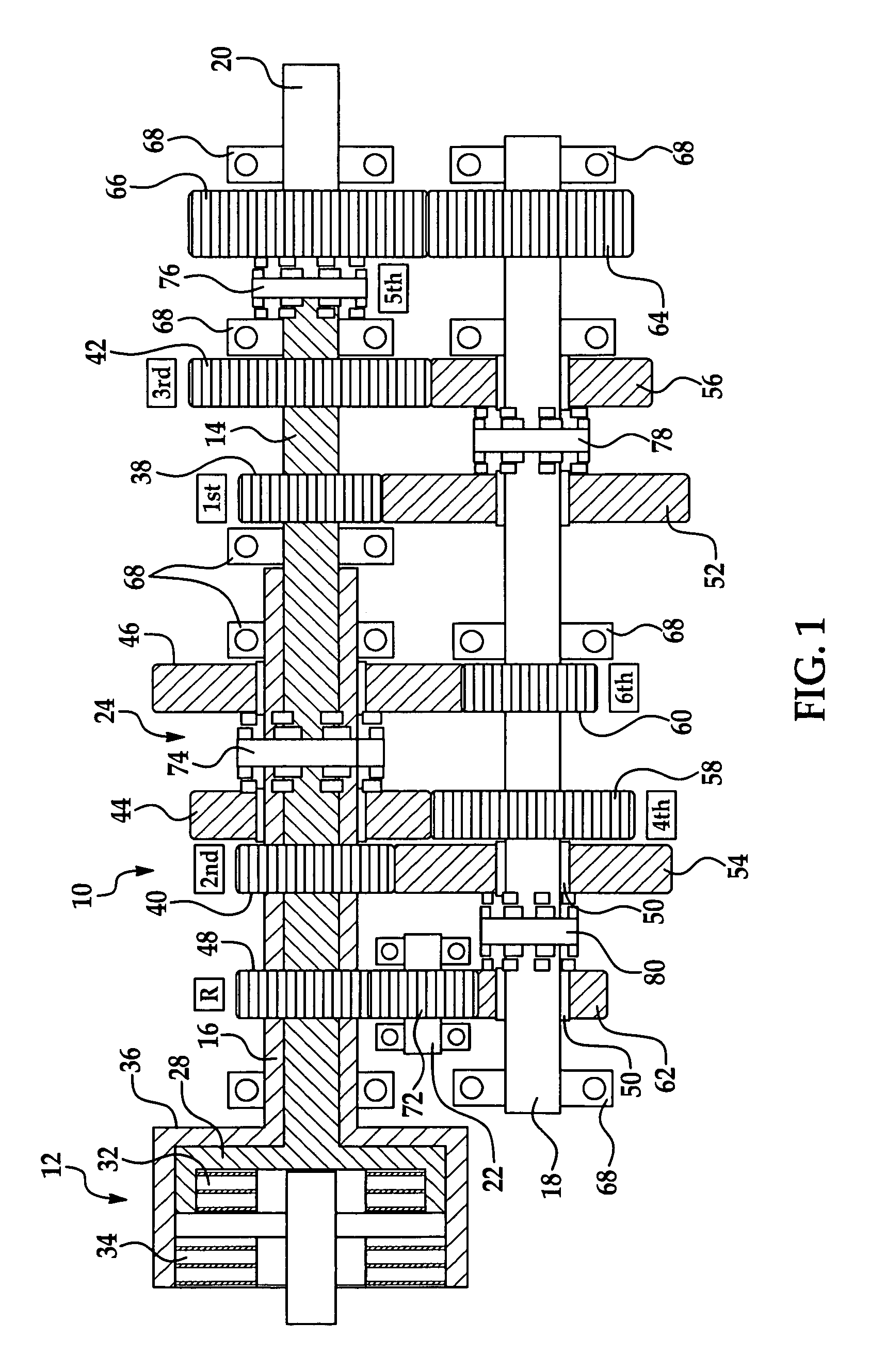Automatic transmission having hydraulic valves with flow force compensation
a technology of automatic transmission and flow force compensation, which is applied in the direction of process and machine control, pressure relieving devices on sealing faces, instruments, etc., can solve the problems of inaccurate operation and control of amt or dct transmissions, inability to achieve the desired vehicle occupant comfort goals in an efficient and cost effective manner, and inability to establish and maintain stable hydraulic pressure in these newer types of automatic transmissions. achieve accurate and stable hydraulic system pressure, reduce the effect of flow force inherent in the effect o
- Summary
- Abstract
- Description
- Claims
- Application Information
AI Technical Summary
Benefits of technology
Problems solved by technology
Method used
Image
Examples
Embodiment Construction
[0028]The present invention relates, generally, to an automatic transmission for a motor vehicle that includes a hydraulic system employing various hydraulic valves, and more specifically to an automatic transmission having hydraulic valves with flow force compensation. Generally speaking, an automatic transmission forms a portion of a vehicle powertrain and is responsible for taking a torque input from a prime mover, such as an internal combustion engine, and transmitting the torque through selectable gear ratios to the vehicle drive wheels. With regard to the evolution in vehicle transmissions that have produced automatic transmissions of the types generally known as automated manual transmissions and dual clutch transmissions, the present invention overcomes the shortcomings and drawbacks related to transmissions having hydraulic systems that do not account for the flow forces that inherently act upon the valve member used in the hydraulic system.
[0029]One example of an automatic...
PUM
 Login to View More
Login to View More Abstract
Description
Claims
Application Information
 Login to View More
Login to View More - R&D
- Intellectual Property
- Life Sciences
- Materials
- Tech Scout
- Unparalleled Data Quality
- Higher Quality Content
- 60% Fewer Hallucinations
Browse by: Latest US Patents, China's latest patents, Technical Efficacy Thesaurus, Application Domain, Technology Topic, Popular Technical Reports.
© 2025 PatSnap. All rights reserved.Legal|Privacy policy|Modern Slavery Act Transparency Statement|Sitemap|About US| Contact US: help@patsnap.com



